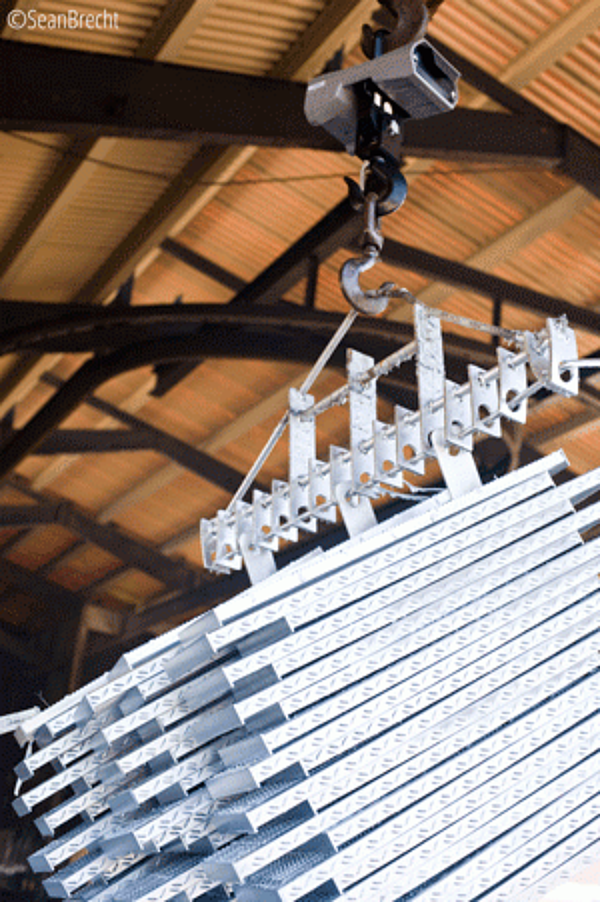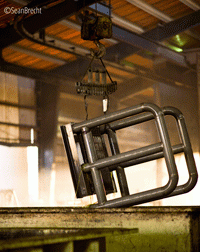Surface Preparation

The purpose of surface preparation in the hot-dip galvanizing process is to obtain the cleanest possible steel surface by removing all of the oxides and other contaminating residues. Thorough surface preparation is paramount as zinc will not react with unclean steel. In order to move the steel parts through the cleaning steps and galvanizing bath, the articles are hung using chains, wires, or specially designed dipping racks (Figure 3).
Cleaning steel to prepare for the hot-dip galvanized coating consists of three steps:
Degreasing
First the steel is immersed in a degreasing bath such as an alkaline caustic solution to remove organic contaminants such as dirt, oil, and grease from the surface of the steel. After degreasing the steel is rinsed with water.

Pickling
Next the steel is pickled in a dilute solution of either hydrochloric or sulfuric acid (Figure 4), which removes oxides and mill scale. Once all oxidation has been removed from the steel, it is again rinsed with water and sent to the final step of the surface preparation.
Fluxing
Finally, the steel is dipped in the flux. The purpose of the flux is to clean the steel of all oxidation developed since the pickling of the steel and to create a protective coating to prevent any oxidation before entering the galvanizing kettle. One type of flux is contained in a separate tank, is slightly acidic, and contains a combination of zinc chloride and ammonium chloride. Another type of flux, top flux, floats on top of the liquid zinc in the galvanizing kettle, but serves the same purpose.
After degreasing, pickling, and fluxing, the surface of the steel is a near white metal, clean and completely free of any oxides or other contaminants that might inhibit the reaction of the iron and molten zinc in the galvanizing kettle.